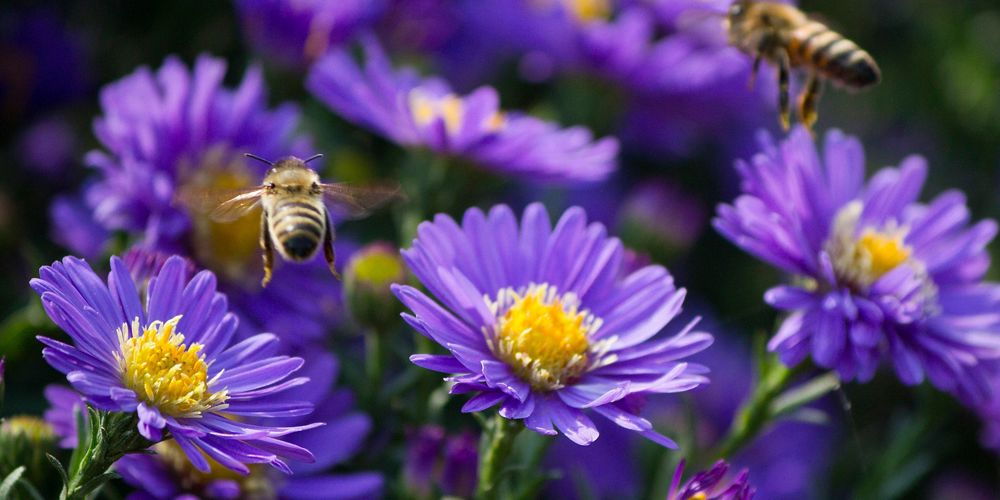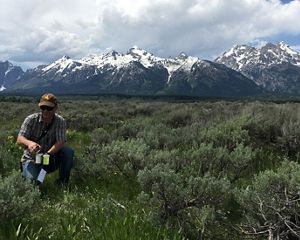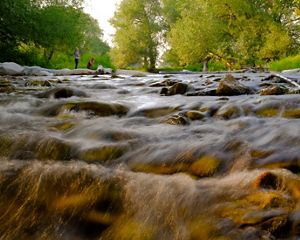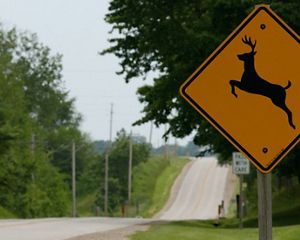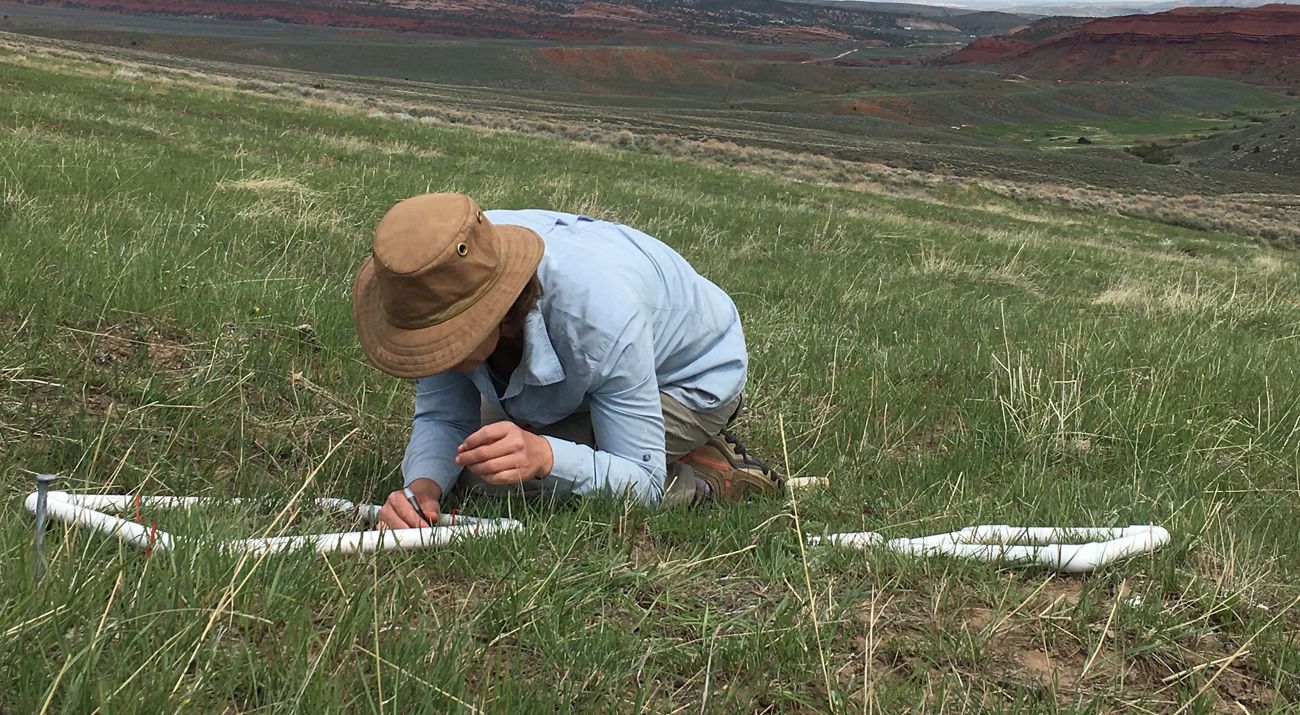
Reclaiming the Sage
Sagebrush restoration with a green thumb and a pasta machine.
Sagebrush grows under pretty harsh conditions, but, once it has been removed, re-establishing the plants has proven pretty tough. It’s not simply a matter of scattering seeds on top of the soil. Planting small seedlings is more successful than seeding but is too labor intensive for large-scale restoration. But, who knew an industrial pasta maker could be part of the solution?
In an effort to restore sagebrush on old mine sites in Wyoming, TNC scientists have taken to the lab—one that looks a bit like a hybrid kitchen and plant nursery. On one side of the lab, three large tables hold rows of tiny pots, underneath the nourishing light of grow lamps. On the other, a large mixer blends various recipes of growing medium, or what TNC in Wyoming restoration scientist Maggie Eshleman calls “the seed pod dough.” The “dough” is then loaded into an industrial pasta machine, which extrudes it as small pellets, called pods. Now, with the seeds safely encased in the growing media, the pods are ready to plant.
Sagebrush Restoration
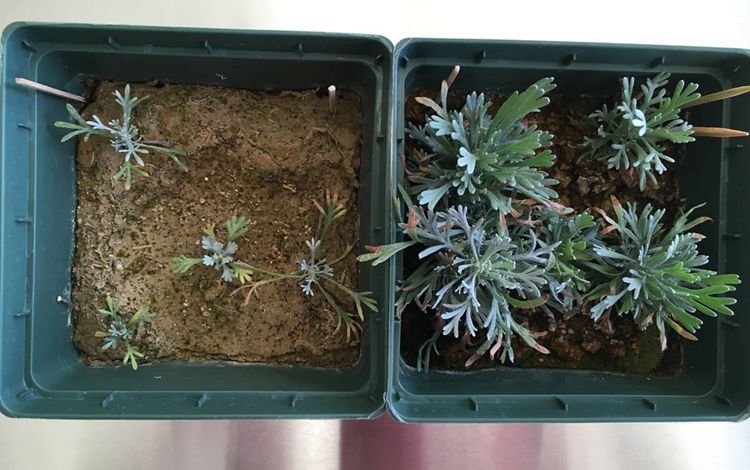
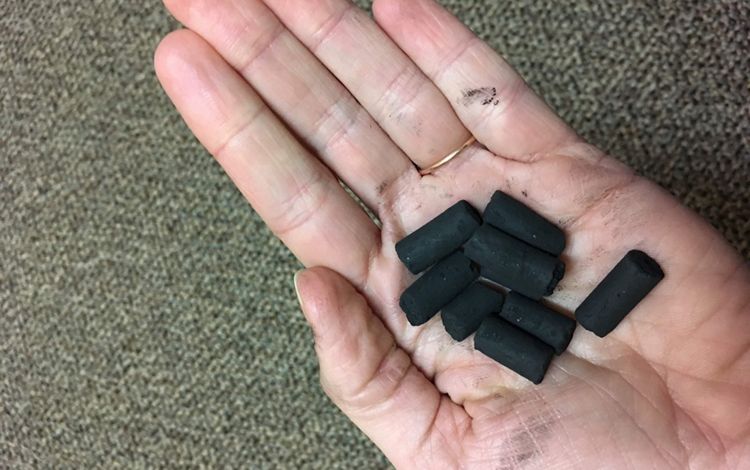
_credit_Scott_Copeland_4000x2200.jpg?crop=244%2C0%2C3510%2C2200&wid=750&hei=470&scl=4.680851063829787)
The idea for seed pod pasta began with researchers the U.S. Department of Agriculture and The Nature Conservancy hoping to restore burn sites in Oregon. Today, we are building on that work here in Wyoming and joining with the Wyoming Department of Environmental Quality and the U.S. Bureau of Land Management in the effort.
The technique still has a long way to go before it’s proven effective. Researchers must answer a bevy of questions. What size pods are ideal for these minute seeds? Too much medium may make it hard for the seeds to emerge, too little may not supply enough nutrients and moisture to give them a good start. What are the essential ingredients to help sagebrush establish in places where the topsoil is gone? Different recipes may even be needed for different conditions. At the lab, we can test new recipes indoors before trying them in the field.
In fall of 2018, we planted seed pods on three reclaimed mine sites and at our Red Canyon Ranch Preserve. We hope to have some initial results soon.
Getting the Next Generation Involved
We haven’t totally given up on planting seedlings, since the activity does yield good results. We also found it’s a great way to educate the community on the importance of this iconic habitat. That’s certainly been the case with generous students from Lander Middle School who’ve been planting young sagebrush seedlings on abandoned mine lands in the Gas Hills near Jeffrey City.
The work is part of the Abandoned Mine Lands Native Plants Project (AML NP2). The multi-year project is a team effort sponsored by the BLM and WDEQ. In addition to the seed pod research, volunteers have also planted sagebrush seedlings on sites in the Gas Hill.
Why All the Effort?
Greater sage-grouse numbers having declined from historical highs of several million to today’s estimates of a few hundred thousand. More than half the bird’s native habitat has been compromised by widespread development in Western states. Proposals to list sage-grouse as an endangered species were held up after plans to conserve the bird were put in place within their Western range. The plans are the result of years of give and take by a broad spectrum of stakeholders from conservation scientist to the energy industry. Now, however, the fate of the bird is once again in doubt. The collaborative plans are currently on hold due to a decision by the Department of Interior to review them.
Native Seed Survey Report
Along with sagebrush, native wildflowers are an important part of the landscape. Learn how our team is working to source the seeds needed for habitat restoration.
